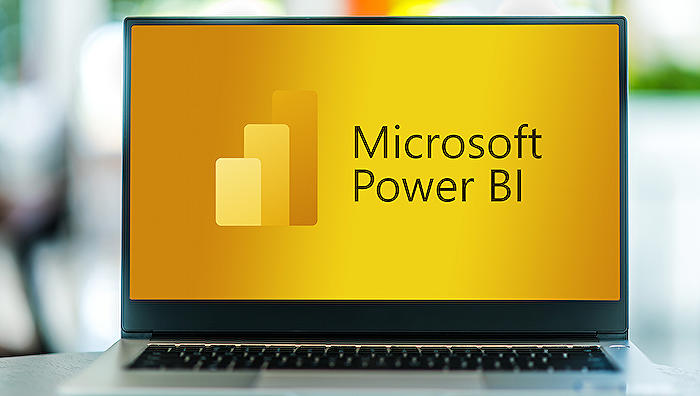- All of Microsoft

Power BI Apps: Impact on Workspace Setup for Multiple Audiences
Explore the impact of Microsofts new feature of multiple audiences for Power BI Apps on your workspace setup and governance.
The blog post by Marc Lelijveld (Data – Marc) [MVP] evaluates Microsoft's Multiple Audiences for Power BI Apps feature, released in August 2022. With it, content can now be selectively visible for different user groups within the same app, a drastic departure from the former 1-on-1 relationship between a Power BI workspace and an app.
Before, users had to create separate workspaces and apps for different content viewers. Thus, the previous setup led to an overflow of workspaces, a maintenance nightmare for administrators and developers alike.
With the new feature, allowing the creation of multiple audiences for a single app, this number of workspaces can be significantly reduced. Now, a report intended for a select group can live within the same workspace as reports for a broader audience.
The feature allows a maximum of 10 different audiences per app, which means, in situations requiring more, a secondary workspace is still necessary. Nevertheless, this is a significant step forward in the workspace organization. More detailed official documentation on this is available here.
Further Insights
This change impacts the workspace governance as the app audiences circle adjusts the count of workspaces required to distribute your content. Gone are the days of unnecessary proliferation of workspaces.
However, this feature brings about its own set of challenges, the most notable being the sustainment of different audiences. Awareness of the tool ecosystem becomes vital, while active directory (AD) groups can simplify the management process.
It's suggested that each audience be represented by a distinct AD group, as users can be part of multiple groups simultaneously, allowing them to view content from multiple audiences. Other considerations include nested AD groups for row level and/or object level security, and the necessity of a clear naming convention for ease of identification and management.
Last but not least, while the new setup can accommodate domain-oriented or departmental workspaces, the limit of 10 audiences per workspace is a barrier for those wanting to setup even more domain-oriented arrangements. Hence, a significant user experience revamp is necessary going forward.
Although challenges persist, this feature certainly brings about a much-needed structural change, reducing disconnected workspaces and enhancing efficiency.
Read the full article Multiple audiences for Power BI apps, will it change your workspace setup?

Learn about Multiple audiences for Power BI apps, will it change your workspace setup?
In the tech world, talking about multiple audiences for apps is a topic that's blown up recently. Especially with Microsoft's Power BI, introduced back in August 2022. To have multiple audiences for one app, it’s a change that significantly impacts the structure of workspaces. This post aims to educate on this topic and its impacts on workspace governance.
Let's take a look at how this change differs from the earlier setup. Traditionally, each workspace corresponded to a single app. The ambit of this extended to publishing precisely a single app to one specific audience. Secure features included locking down access to individual artifacts. Despite this, users had to deal with multiple workspaces for different purposes. This structure led to high maintenance and abundance of different workspaces, which posed challenges to both administrators and developers.
So how does catering to multiple app audiences change things? The individual workspace required for every report shared with a specific set of users is no longer a necessity. Instead, you can maintain a single workspace for a specific domain, such as supply chain management. Although, remember that there's a limit of 10 different audiences per app. If you require more audiences than this, you'll still need to set up an additional workspace. While this post doesn't provide an in-depth guide of this change, it's recommended to review this documentation.
Now, let's consider how this change affects workspace governance. With this new feature, you require fewer workspaces to share different content sets with different audiences. Despite the decrease in workspaces, maintaining several audiences brings about an important challenge. That is, ensuring understanding and ownership of the content distributed across the various app audiences. Implementing active directory groups is a handy solution, making it easier to manage and identify various audiences.
Lastly, it's easier with the new app audiences feature to define and maintain domain or department-specific workspaces. It lets you manage all your department-related reports from a single place. Nevertheless, it's important to use workspaces logically. Considering the volume of reports, avoid stuffing miscellaneous reports into a single workspace. This will help maintain clarity and oversight.
It's clear that this new feature of having multiple app audiences is beneficial. With it, you get better oversight and easier setup for domain-oriented workspaces. The limit on the number of audiences could do with an increase though, to accommodate a larger and diverse audience. Looking ahead, it's advisable to move towards domain or department-oriented setup, instead of creating numerous workspaces. This way, teams can easily identify and manage their respective workspace contents.
For more understanding of this topic, you can refer to this blog post on workspace setup.
More links on about Multiple audiences for Power BI apps, will it change your workspace setup?
- Multiple audiences for Power BI apps, will it change your ...
- Feb 1, 2023 — One of the important limitations to keep in mind, is the limit of maximum 10 different audiences per app. In case you need more audiences than ...
- Announcing Public Preview of Multiple Audiences for ...
- Aug 24, 2022 — With multiple audiences for an App, now Power BI App author can create multiple audience groups within the same App and assign different ...
Keywords
Power BI apps, multiple audiences, workspace setup, Power BI workspace, BI apps audiences, change workspace setup, Power BI functionality, BI apps setup, Power BI audiences, audience-focused BI apps.